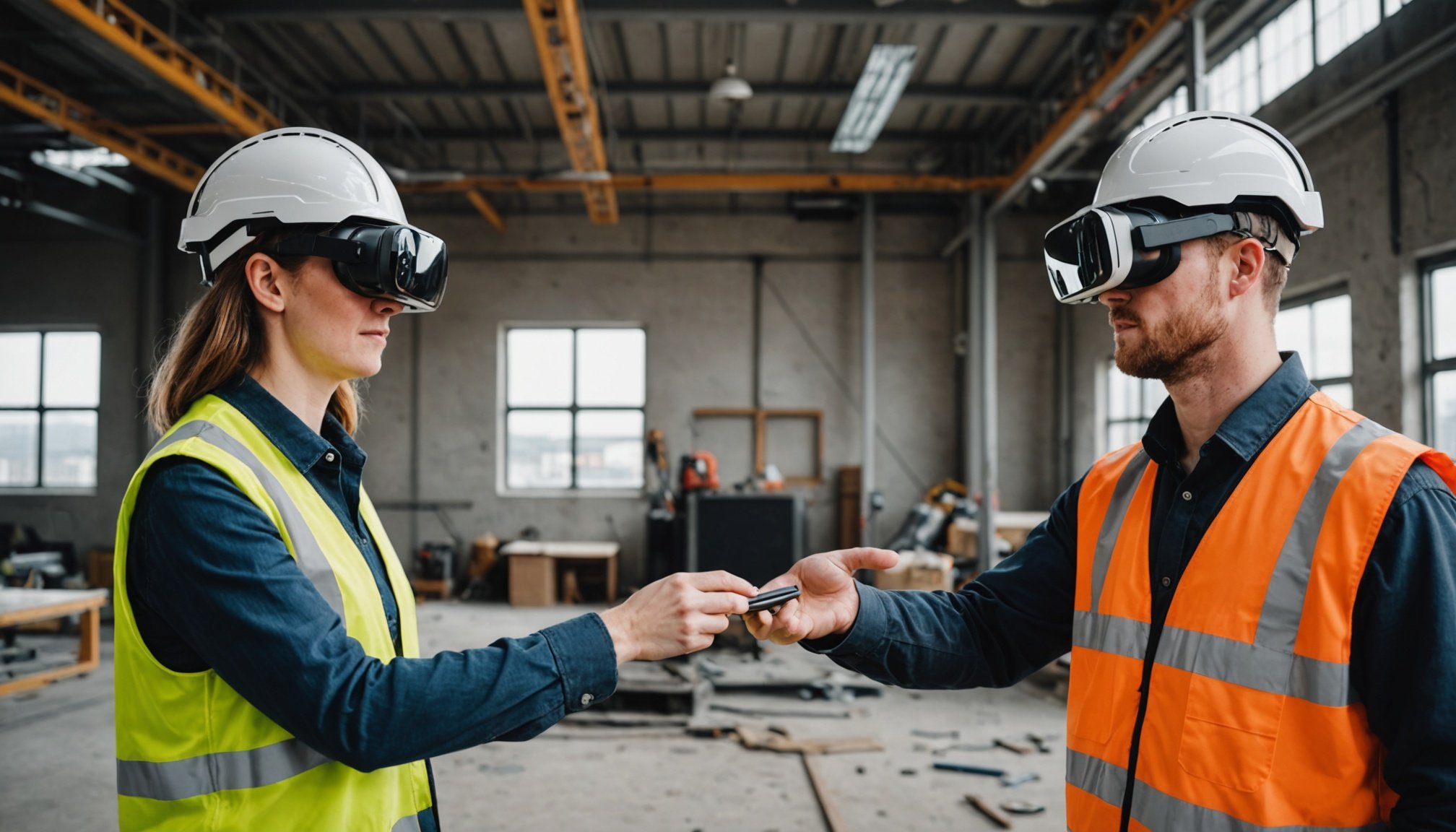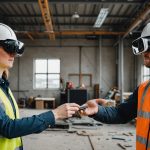As UK construction firms face increasing complexity in project management, VR technology offers a transformative solution. This innovative approach enhances project visualization, enabling teams to foresee challenges and make informed decisions before breaking ground. By immersing stakeholders in virtual environments, firms can promote collaboration and streamline processes. Discover how harnessing VR not only boosts efficiency but also sets the stage for sustainable growth in the construction industry. Embrace the future of project visualization and unlock the potential for your business today.
Overview of VR Technology in Construction
Virtual Reality (VR) is transforming the construction industry by offering innovative solutions for project visualization. Initially developed for gaming and entertainment, VR technology has evolved significantly, finding applications in various fields, including construction. It allows users to immerse themselves in a computer-generated environment, offering a realistic experience of the project before it is physically built.
Also read : Unlock creativity with engaging event video templates
Current trends in VR application within the construction industry highlight its growing importance. Companies are increasingly adopting VR to enhance project visualization, enabling stakeholders to walk through and interact with 3D models. This not only aids in identifying potential design flaws early but also facilitates better communication among team members, clients, and contractors.
The importance of VR in enhancing project visualization cannot be overstated. By providing a detailed and interactive view of the construction project, VR technology helps in making informed decisions, reducing errors, and improving overall project efficiency. It allows for a more collaborative approach, where feedback can be integrated seamlessly, ensuring the final output aligns with the client's vision. As VR technology continues to advance, its role in the construction industry is expected to expand, offering even more sophisticated tools for project planning and execution.
This might interest you : Unlocking creativity with the right mockup generator
Case Studies of VR Implementation in UK Construction Firms
Exploring the integration of VR applications within UK construction firms unveils fascinating insights into its impact on project management. Various case studies highlight the transformative effects of VR on the industry.
Successful VR projects in the UK
Several UK construction firms have pioneered VR integration with remarkable success. For instance, a leading firm utilized VR to simulate complex architectural designs, resulting in a 30% reduction in design errors. Another company implemented VR for safety training, significantly lowering on-site accidents. These successes underscore VR's potential to revolutionise construction practices.
Lessons learned from VR implementation
Adopting VR in project management comes with valuable lessons. Firms have discovered that early involvement of stakeholders in the VR process enhances project outcomes. Additionally, investing in staff training ensures efficient VR utilization, maximising its benefits. These insights are crucial for firms considering VR adoption.
Stakeholder feedback on VR experiences
Feedback from stakeholders in VR-enhanced projects is overwhelmingly positive. Clients appreciate the immersive experience, which provides a clearer understanding of project details. Contractors report improved collaboration and communication, leading to smoother project execution. Overall, VR has elevated stakeholder engagement, fostering a more cohesive construction process.
Advantages of VR for Project Visualization
Virtual Reality (VR) provides numerous benefits in the realm of project visualization. One of the most significant advantages is the improved stakeholder engagement. By offering immersive experiences, VR allows stakeholders to virtually walk through projects, fostering a deeper understanding and connection to the design. This leads to more informed decision-making and ensures that the project aligns closely with the client's vision.
Another key benefit is the enhanced design accuracy. VR enables precise visualization of 3D models, which aids in identifying and correcting potential design errors early in the process. This proactive approach significantly reduces the risk of costly modifications later in the project timeline.
Furthermore, VR contributes to cost and time savings. By visualizing projects in their early stages, teams can anticipate challenges and address them before construction begins. This not only minimizes delays but also reduces the financial burden of unforeseen changes. The ability to simulate various scenarios and outcomes allows for a more efficient allocation of resources and a streamlined project management process.
In summary, VR technology offers transformative advantages in project visualization, promoting enhanced communication, reducing risks, and ultimately leading to more successful construction outcomes.
Practical Tips for Implementing VR in Construction Projects
Implementing VR technology in construction projects requires careful planning and execution. To begin, selecting the right tools and software is crucial. Essential tools include VR headsets, 3D modelling software, and collaboration platforms that support immersive environments. Popular software options like Autodesk Revit and Unity offer robust features for creating detailed virtual models.
Training and skill development are vital for successful VR integration. Teams should be equipped with the necessary skills to operate VR tools effectively. Offering workshops and training sessions can enhance their proficiency, ensuring they are comfortable with the technology. This investment in skill development maximises the benefits of VR in project management.
To ensure seamless integration into existing workflows, consider adopting best practices. Start by identifying areas where VR can add value, such as in design reviews or safety training. Gradually introduce VR into these processes, allowing teams to adapt without overwhelming them. Encourage feedback and collaboration to refine the implementation strategy.
Incorporating VR into construction projects can revolutionise project management by enhancing visualisation and communication. By focusing on the right tools, training, and integration strategies, firms can leverage VR to improve project outcomes significantly.
Challenges and Future Trends of VR in Construction
The challenges of VR adoption in the construction industry are multifaceted. One primary obstacle is the high initial cost associated with acquiring VR equipment and software. This financial barrier can deter smaller firms from embracing the technology. Additionally, there is a steep learning curve, requiring significant investment in training for effective use.
Despite these challenges, the future trends of VR in construction are promising. As technology advances, costs are expected to decrease, making VR more accessible to a broader range of companies. Enhanced software capabilities will allow for more detailed and interactive project simulations, further improving design accuracy and project outcomes.
The industry impact of VR is anticipated to be substantial. In project management, VR can streamline processes by facilitating real-time collaboration and communication among stakeholders. This can lead to more efficient decision-making and reduced project timelines. In design processes, VR offers the potential for innovative approaches, enabling architects and engineers to experiment with complex structures in a virtual environment before commencing physical construction.
Overall, while the adoption of VR presents certain hurdles, its potential to revolutionise the construction industry is significant, paving the way for more efficient and innovative project management and design practices.











